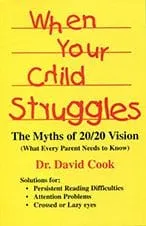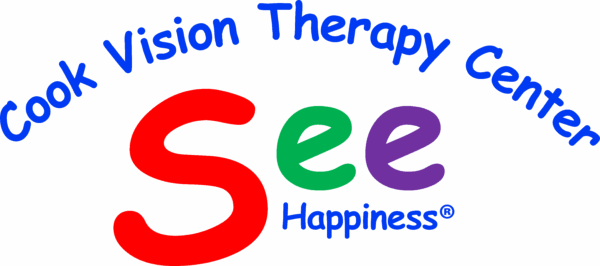Atlanta Amblyopia (Lazy Eye) Vision Therapy
What Is Amblyopia?
Throw away your patch!
Amblyopia, often called “lazy eye,” is a vision development disorder where the brain fails to process input from one eye, despite the eye itself being structurally healthy. This occurs because the brain prioritizes the stronger eye, weakening neural connections to the amblyopic eye over time. Unlike simple refractive errors, amblyopia cannot be fully corrected with glasses alone—it requires targeted therapy to retrain the brain’s visual processing.
Key Facts About Amblyopia:
-
Affects Both Children and Adults: While commonly diagnosed in childhood, amblyopia can persist into adulthood if untreated. Modern research confirms that vision therapy for adults is effective, challenging outdated beliefs that treatment only works before age 6.
-
More Than Just Blurry Vision: Amblyopia disrupts binocular vision (how the eyes work together), reducing depth perception, coordination, and performance in daily tasks like reading or driving.
-
Treatable Without Full-Time Patching: Innovative therapies, such as perceptual learning and 3D vision exercises, stimulate the amblyopic eye in short, focused sessions—proven to outperform traditional hours-long patching.
Amblyopia, or lazy eye, is the leading cause of childhood vision loss, affecting 1 in 50 children. Despite its nickname, it’s not about “laziness” – it’s a neurological condition where the brain ignores one eye. Early treatment (before age 7) can improve vision in 75-90% of cases, according to the American Academy of Ophthalmology.
In this guide, you’ll learn:
-
Key signs of amblyopia in toddlers and older children
-
How eye patching, atropine drops, and vision therapy work
-
New treatments for adults and older kids
-
Actionable tips from pediatric ophthalmologists
What Causes Amblyopia?
Amblyopia develops when the brain and eyes fail to work together during early childhood. Here’s a breakdown of the key causes:
1. Strabismus (Eye Misalignment)
When the eyes are crossed or misaligned, the brain ignores the weaker eye to avoid double vision. This is the most common cause of amblyopia.
2. Refractive Errors (Anisometropia)
A significant difference in prescription strength between the two eyes, such as one eye being nearsighted while the other is farsighted, can trick the brain into relying on the clearer eye.
3. Deprivation
Physical blockages like cataracts, droopy eyelids (ptosis), or corneal scars prevent light from entering the eye during infancy. Untreated, this leads to severe amblyopia.
4. Family History and Prematurity
Children born prematurely or with a family history of amblyopia face a higher risk. Siblings of affected kids should be screened by age 3.
How to Spot Amblyopia: 7 Warning Signs
Amblyopia often goes unnoticed because children rarely complain about vision issues. Watch for these red flags:
-
An Eye That Wanders
One eye may drift inward or outward, especially when the child is tired. -
Clumsiness or Poor Depth Perception
Difficulty catching balls, frequent spills, or trouble navigating stairs. -
Squinting or Closing One Eye
The child might squint in bright light or cover one eye while reading. -
Head Tilting
Tilting the head to favor the stronger eye. -
Failing School Vision Screenings
Consistent difficulty reading letters or symbols on eye charts. -
Avoiding 3D Content
Inability to perceive 3D effects in movies or books. -
Eye Fatigue or Headaches
Complaints of tired eyes after close-up tasks like drawing.
Critical Tip: The American Optometric Association recommends first eye exams at 6 months, followed by checkups at age 3 and before starting school.
How Amblyopia Is Diagnosed
Pediatric eye specialists use these tests to confirm amblyopia:
-
Visual Acuity Testing
Child-friendly charts with shapes or letters measure how well each eye sees. -
Retinoscopy
A light is shined into the eyes to detect refractive errors without needing verbal feedback. -
Cover-Uncover Test
The doctor covers one eye to check for misalignment (strabismus). -
Pupil and Retina Exam
Rules out physical issues like cataracts using a handheld microscope.
Three Myths:
1) You cannot treat amblyopia after age 6:
The fact is that amblyopia can be treated in both children and adults. Gold standard studies are showing that significant gains may be found in teenagers. There are numerous case reports of adults being treated by “perceptual learning,” a form of vision therapy. As long ago as 1977, a literature review showed that the chances of getting four lines of improvement (20/80 to 20/70 to 20/60 to 20/50 to 20/40, for example) were 50 percent whether treatment was performed before age 7 or after age 16. At Cook Vision Therapy, we have been treating amblyopia for the past 30 years in both children and adults.
2) Full-time Time Patching is Required:
The fact is that at Cook Vision Therapy we have not had full-time patched school-age children at home for the last 30 years. It is not necessary. Gold standard studies now show that 6 hours a day of patching is as effective as 12 hours a day. Two hours a day of patching while playing video games is as effective as 6 hours of passive patching. In our office, we prescribe intensive therapy at the very limits of performance for no more than 25 minutes a day (usually 10 minutes).
3) Amblyopia Is a One-eyed Problem:
The fact is that amblyopia is generally a problem of two-eyed seeing. Because the eyes do not work together, the brain reduces seeing in one eye to reduce interference between the two eyes. Patching an eye to improve acuity in one eye generally does not correct the two-eyed problem. As a result, when the patch is no longer worn, the vision is again lost in the “amblyopic” eye.
The real loss with amblyopia, however, is not just that sight is reduced when the good eye is covered. Amblyopia can reduce 3D vision and performance for everything in life. The brain continues to shut off the amblyopic eye even when both eyes are open. Sometimes children become very good at seeing with one eye. Sometimes not. All 7 Visual Abilities remain poor.
Why Choose Evidence-Based Amblyopia Treatment?
At Cook Vision Therapy in Marietta, GA, we combine 30+ years of clinical expertise with cutting-edge research to address amblyopia’s root causes. Our methods focus on:
-
Strengthening Brain-Eye Communication: Short, daily exercises (10–25 minutes) push the amblyopic eye to its performance limits, rebuilding neural pathways.
-
Enhancing 3D Vision: Unlike patching alone, our therapy trains both eyes to work together, improving depth perception and reducing relapse risk.
-
Tailored for All Ages: Gold-standard studies show 50% of patients gain 4 vision lines, whether they’re 7 or 70.
Free Internet Screening and Phone Consultation
If you or your child struggles with reading, call for a Free Phone Consultation. End the struggle!
Frequently Asked Questions
-
Why Treat a Lazy Eye?
In children, Lazy Eye requires immediate treatment to prevent further loss of vision. Such care helps ensure that if something happens to a person’s good eye that person will not be left partially blind. An equally important reason to treat a lazy eye, though, is safety. A person with Lazy Eye may misjudge how far away things are or fail to see things approaching from the side. A long-term Scandinavian study found that children with lazy eye were over fifteen times more likely to suffer accidents to their normal eyes. -
Can a Lazy Eye be Treated After the age of Six?
-
Will a Patch Need To Be Worn?
-
What is amblyopia, and can adults be treated for it?
-
How does amblyopia treatment work without full-time patching?
-
Where can I find amblyopia specialists in Marietta, GA?
-
Why is amblyopia considered a two-eyed problem?
-
Will vision therapy improve 3D vision in amblyopia patients?
-
What are the success rates for amblyopia treatment in teenagers?
-
How long does amblyopia treatment take at Cook Vision Therapy?
-
Can screen time cause amblyopia?
-
Is lazy eye genetic?
Check Out Our Resources
Dr. Cook’s Publications:
- Authored books VISUAL FITNESS and WHEN YOUR CHILD STRUGGLES.
- Published articles in top optometric journals.
- His article “Eyesight, infinity and the human heart” was voted “Best Non-Technical Article” by the Association of Optometric Editors.





